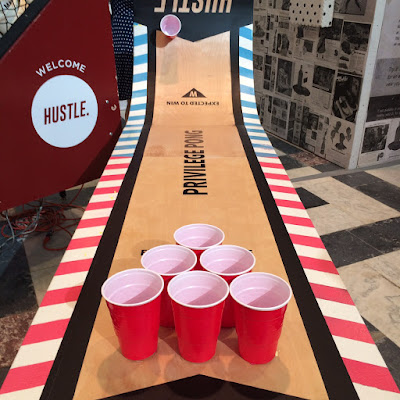We often think--or hope--that people are inspired when they visit our museums or historic sites. "We have great stories," we say, and hope that our visitors can make their way through the thickets of details and biography. Interestingly enough, I've been working on two projects recently where I've actually been asking visitors about inspiration. And because it's Father's Day tomorrow, it seems a particularly apt time to report back from my conversations. Above, my own dad as a kid. In my own childhood, he was always the one behind the camera, so rarely spotted on film!
At the
Old Manse, a historic house in Concord, MA and a part of The Trustees, we asked people, before they visited the house, who inspired them. (a big shout-out to JHU museum studies student Caren Ponty, who's been volunteering on this project with me). This was a way of thinking about how to connect personal stories to the broader story of the house. It was a bit of surprise that family came out way ahead. Here's what some people said about parents and grandparents:
- Folks and family—we respect ‘em---lots of
influence
- Mother:
always positive, never complaining. Shining example, always walked, saw color, religion
- My dad…despite dyslexia, taught himself to read,
Ph.D in biochem, told he would
never work, did, and now 95
- Friends and families with motivating
passions. Their interests become
my interests.
- My parents—role models, do a good job of
Christian lifestyle
- Grandpa—always wanted to learn and wanted us to
learn
- My mom, because she tried to make the world a
better place—not many people let someone take things apart to see how they
worked.
But a few other people (and one animal) also came in for some shout-outs:
- People who make and do social activism, who
write and do
- My dog—she’s always happy
- Communities and churches that help the less
fortunate
- George Washington—smart, brave, changed the
world
- William Shakespeare—loved the literature,
resonates after so many years.
Still relevant
- Jane Austen—her ability to communicate
understanding of human nature and Charles Dickens—for people and characters
- Resilient people, so hope for humanity
Our challenge now is to think about how we build on these responses--how we understand that the stories of family and inspiration are not limited to Emerson, Hawthorne, or those who witnessed the beginning battle of the American Revolution from the Old Manse's windows. It's about how we share the stories of oft unsung families, such as those of Phyllis, Cesar, and Cate, the enslaved people who also lived in the house and who of course, had their own unrecorded family stories. How do we connect the stories of this house with the family stories of newcomers to this country? Can we develop a shared well of inspiration?
In Savannah, I've been working with the
Juliette Gordon Low Birthplace to consider the visitor experience there. A large percentage of their visitors are Girl Scouts, and they come ready to be inspired by Daisy (as she was known), the founder of Girl Scouts. We've been asking them to complete, on a "Dear Daisy..." postcard, the following: "We heard about how you made a difference by founding Girl Scouts. Here's how I would like to make a difference." And the responses are as varied as the girls themselves:
- keep animals and humans healthy
- make sure that I am kind
- let girls do what boys do
- help people accomplish their dreams
- create self-flying cars with mini-fridges
- become President
- keep your legacy for as long as I can
These Girl Scouts get that deep connection with Daisy. And someday I have no doubt that I'll be getting from place to place in that self-flying car with a mini-fridge! I want all our historic sites to inspire that same deep well of inspiration. Our visitors--and our communities--want us to connect with them. They want to be inspired by place, by story, by connections to their lives. They're not particularly inspired by old-fashioned furniture, by dates; by complicated genealogies or by what you or your guides are inspired by. The challenge for each of us seems to be to work together to let go of what we think visitors "need to know" and to embrace personal meaning-making.
One quick note about the how and the way of these conversations. They continue to be one of the most rewarding parts of my work. Take a few minutes out of your day and ask visitors (or non-visitors) some questions. But make those questions meaningful, not just informational. I ask those informational questions too, but the great conversations come when thoughtful questions are asked. Make those evaluations fun--the Girl Scouts thought the Dear Daisy postcard was an activity, rather than a chore. Final vital piece of information: anyone will answer a survey in exchange for a box of Girl Scout cookies.













